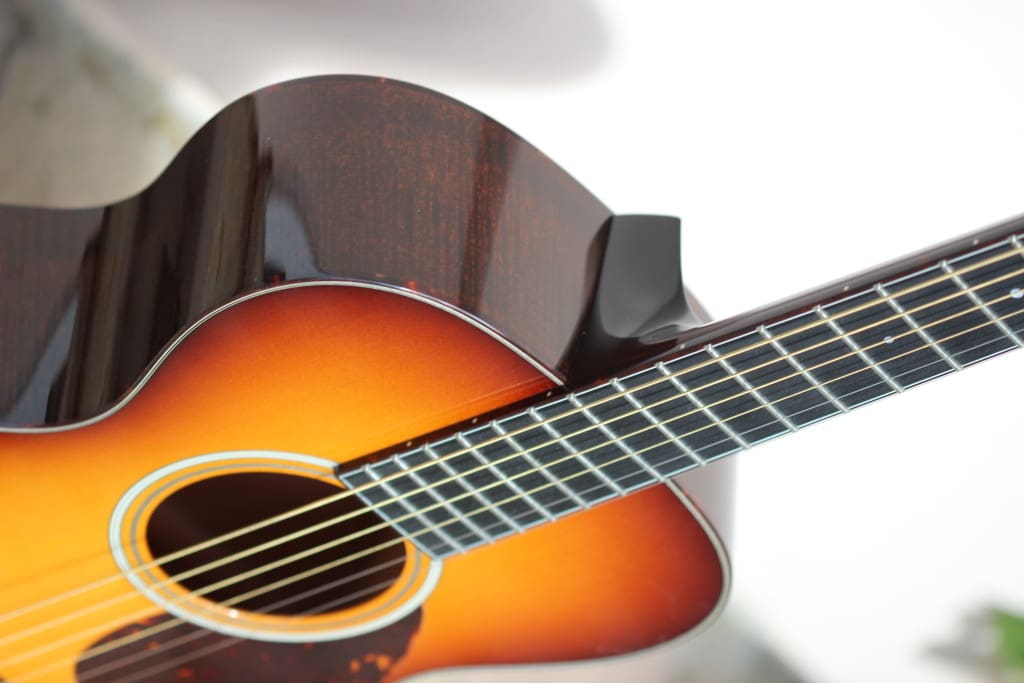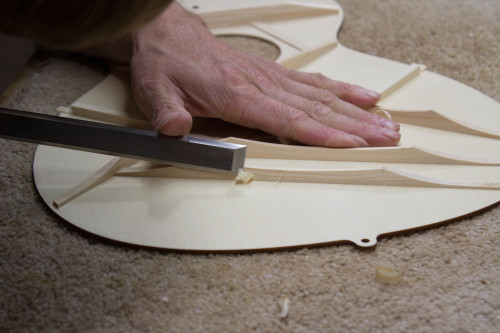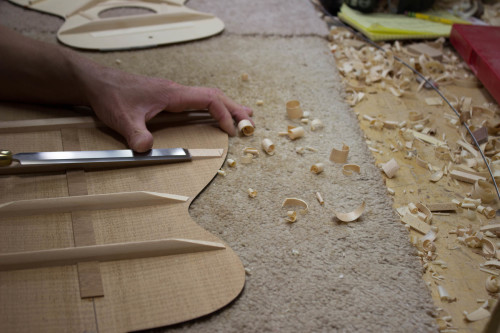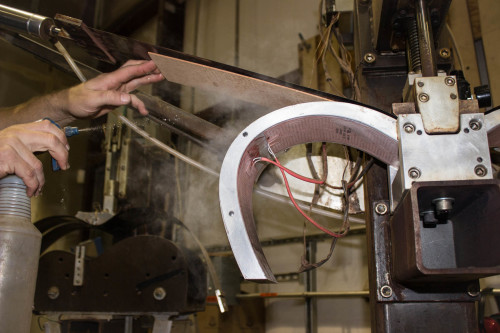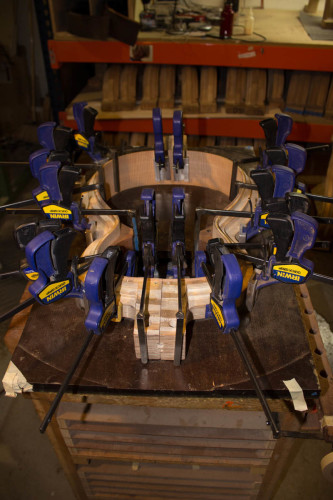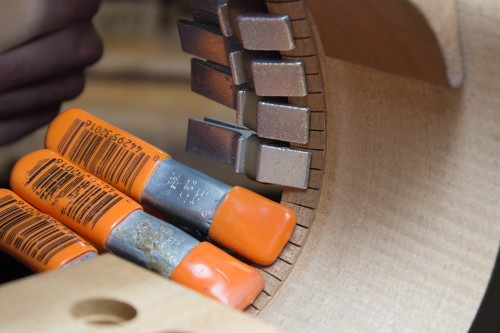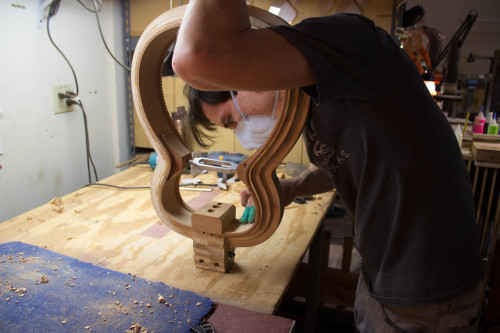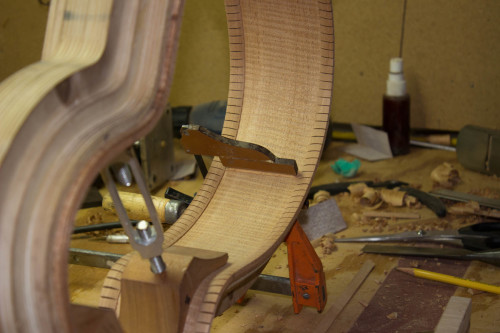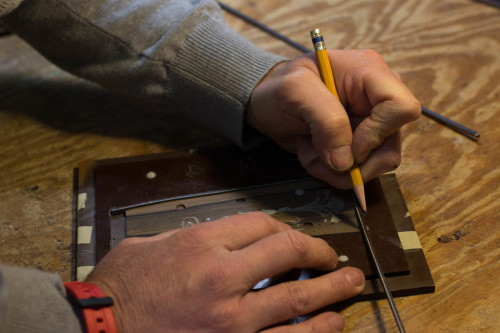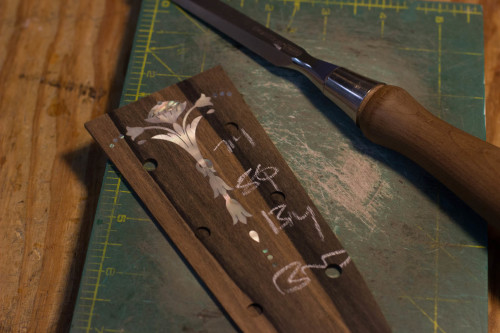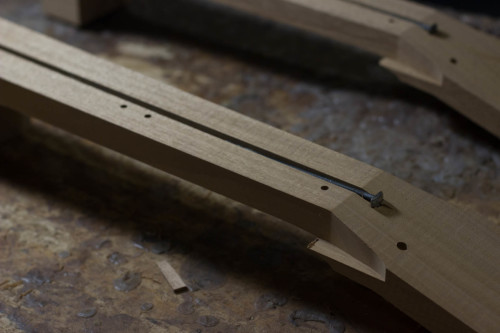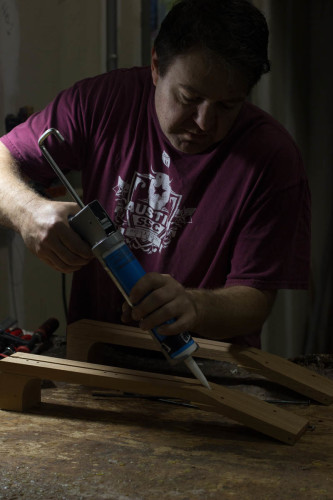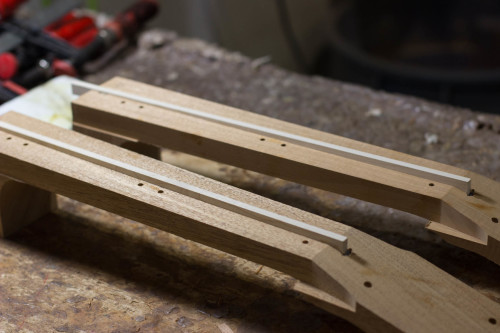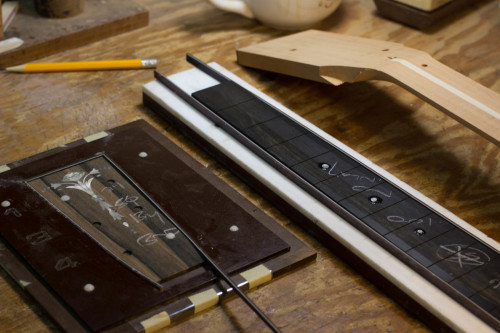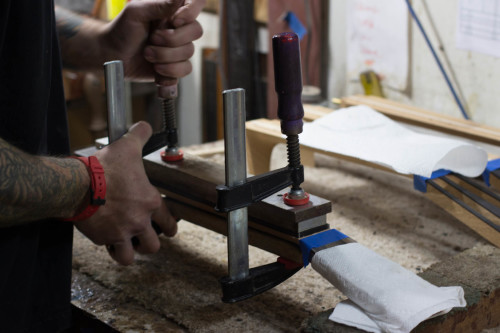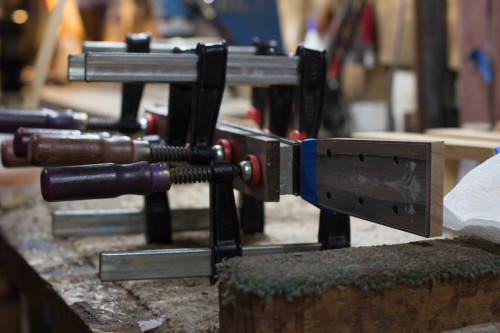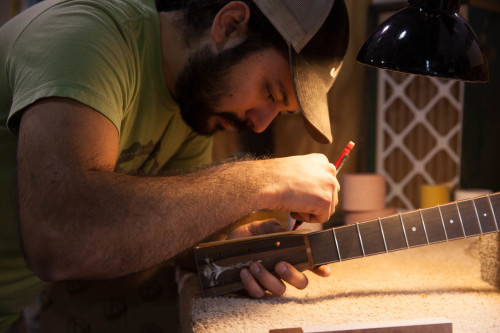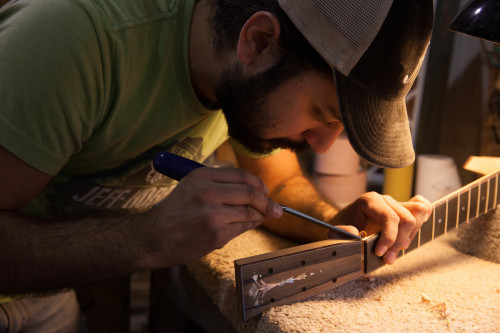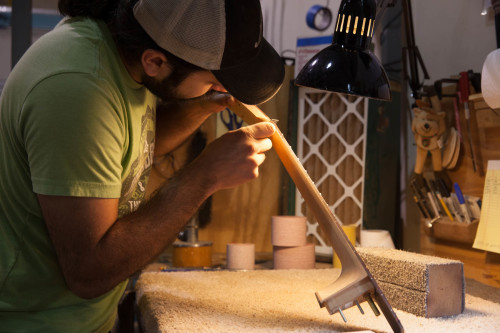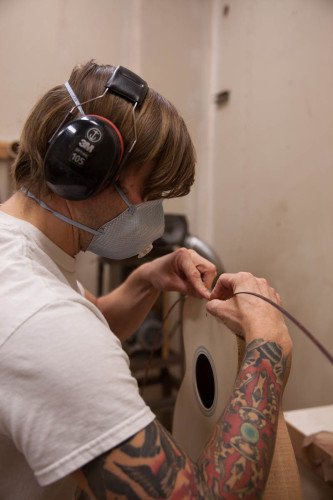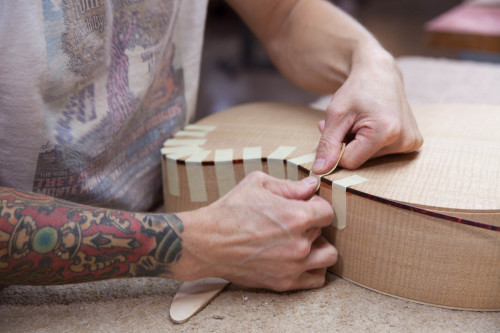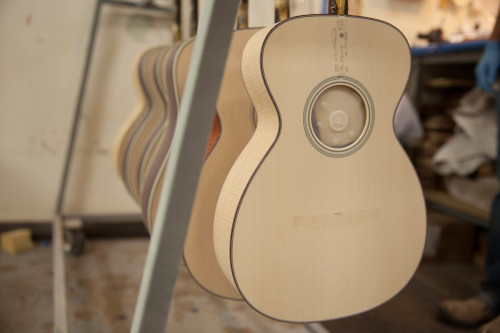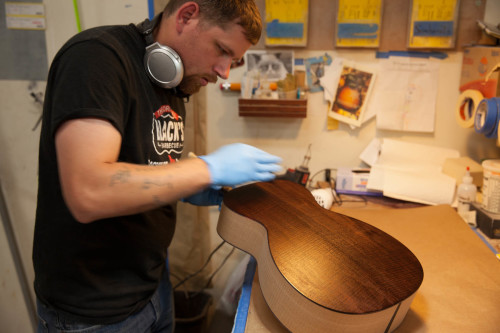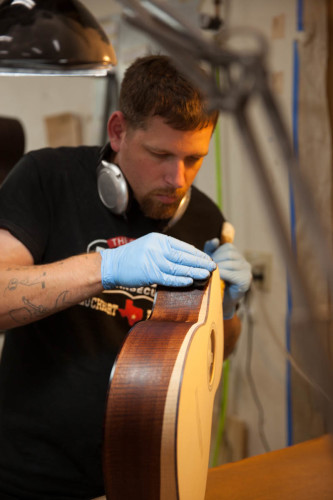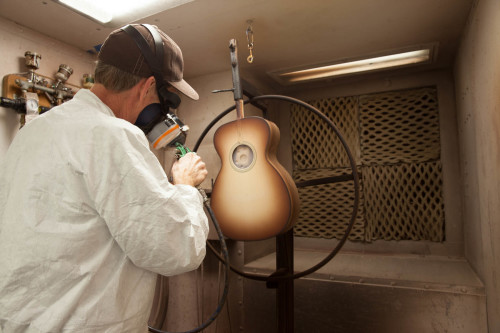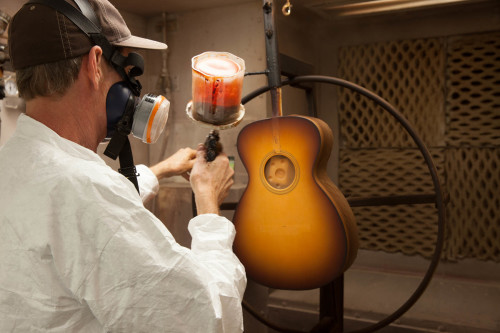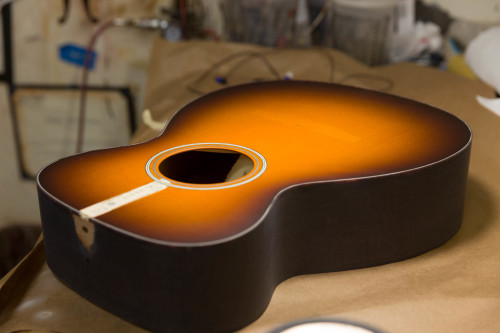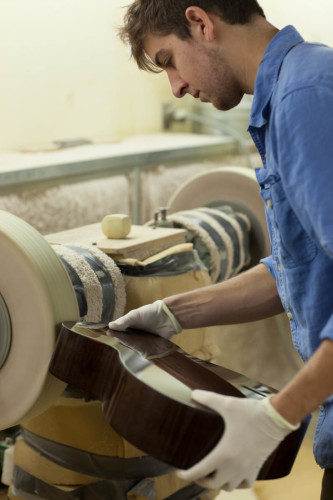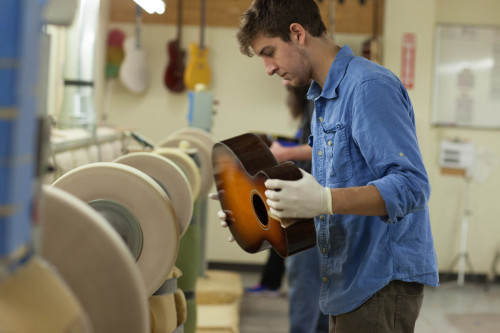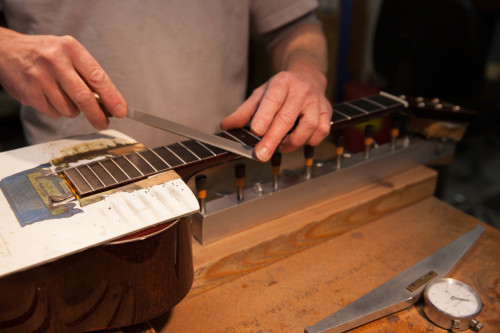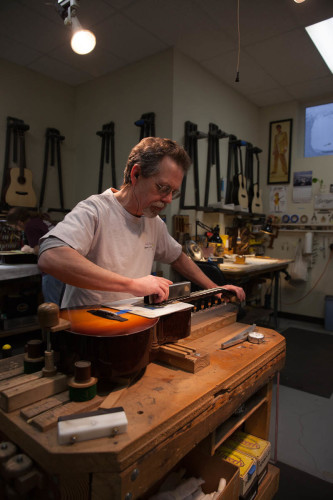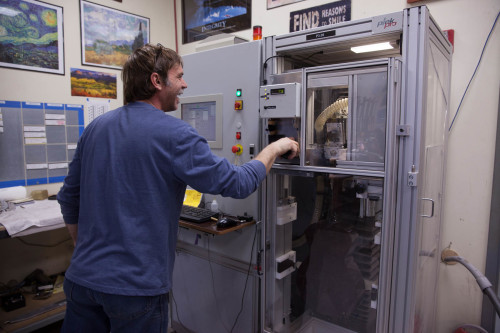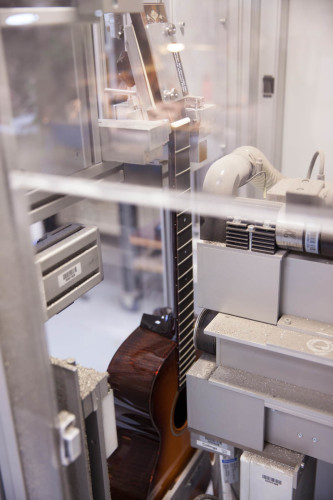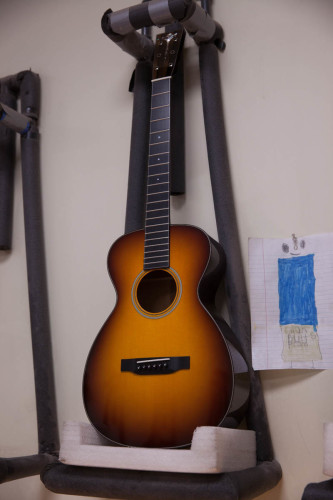“Travel” guitars, just like travel itself, can come in several flavors. There’s the old beater that you don’t worry about dragging to a campfire sing-along, playable but hard to get excited about. There’s the nice, but not terribly valuable guitar that can be left in the attic of a vacation home, maybe an import model, more an avoidance of travel than a travel guitar.
Nearly every domestic contemporary builder seems to have their own take on the travel guitar. They come with all sorts of names: Mini, Baby, Terz, Backpacker, 3/4 size, etc. Then, of course, there’s the folding-neck Voyage Air, which makes stuffing your guitar into a plane’s overhead compartment a relative breeze.
All of these guitars range wildly in quality and price. I suppose that if cost, waiting time and crossing borders were not issues, top of heap would be something like a TJ Thompson 5 or 2 1/2 size made from the finest woods. He’s made a very few of these over the years for family and friends and they are exquisite. But shouldn’t a travel guitar be able to go anywhere? If you’re really going to travel with it, you better rule out woods and materials currently on or likely to be added to things like the CITES list—things like Brazilian rosewood or ivory.
So I decided to order an honest-to-God travel guitar that fit my needs. Mainly: A real guitar, one that plays like my favorite living room companion, that’s built and finished perfectly, and, most importantly, can be walked through customs and not, shall we say, stay with the agent. That narrowed the field considerably.
After putting that all in the proverbial hopper, I came up with a custom Collings Baby. The plan was to spec it out so that it would be beautiful, playable and constructed without any CITES headache-inducing materials.
For me, that guitar looked like this:
A German spruce top, a highly figured mahogany back and head plate, tortoise binding, one of Collings’ famous sunbursts, 1 ¾” nut, slightly oversize frets, and, as a finishing conceit, a sweet pearl torch on the headstock.
With that in mind, here’s my travel guitar’s inaugural travelogue (so to speak), as it went through all the various stations at Collings’ Austin headquarters from start to finish.
Special thanks to Steve McCreary for the hotel and food advice, Bruce VanWart who went deep into the Collings wood stash to find just the right set of mahogany and Alex Rueb for copiously documenting the process from start to finish (and I do mean finish… right up to the sunburst spray and nitrocellulose clear coat).
